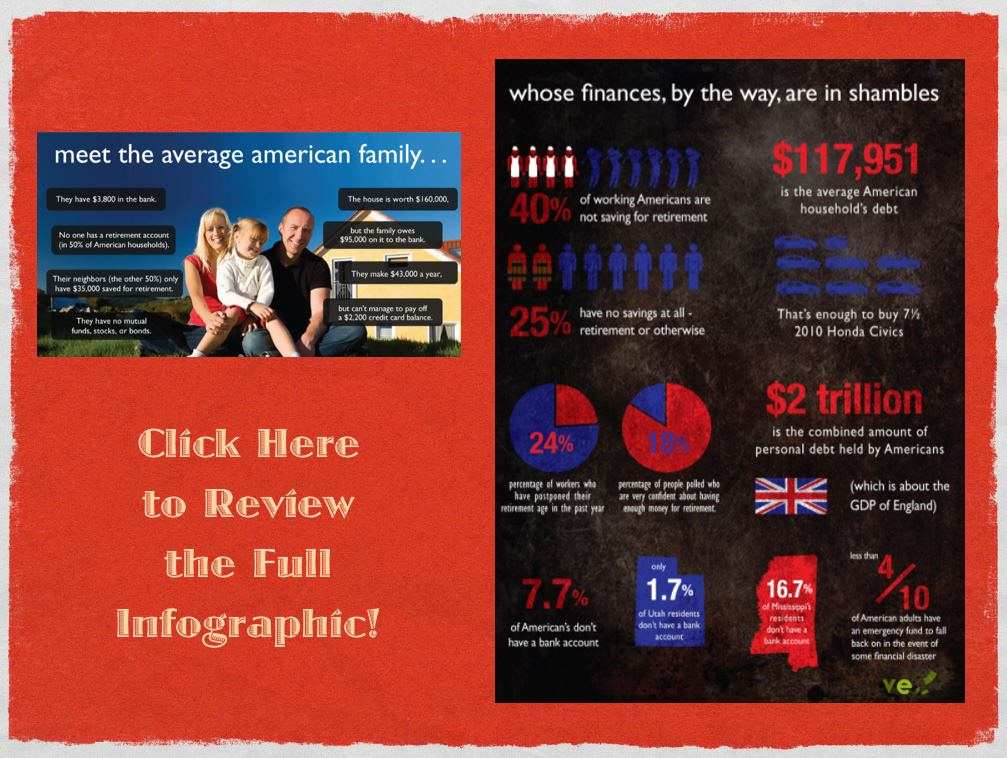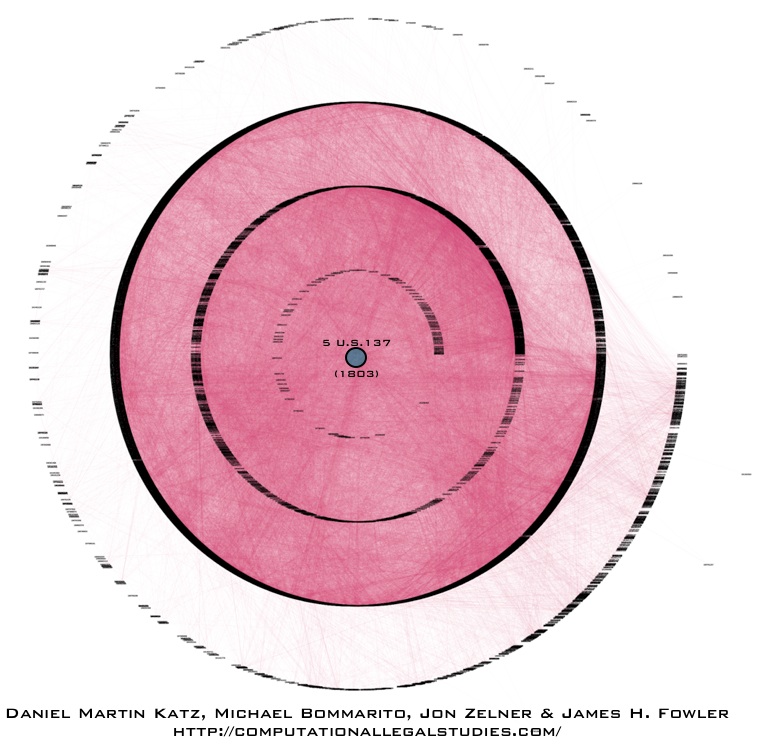Author: clsadmin
Elena Kagan to be the Next US Supreme Court Justice? [Via Intrade]
Still no announcement from the White House but there has been some movement over at Intrade … Click Here for Most Recent Chart [From Intrade.com]
Computational Legal Studies Presentation Slides from the Law.gov Meetings
Thanks to Carl Malamud and the good folks at the University of Colorado Law School and University of Texas Law School for allowing us to participate in their respective law.gov meetings. For those interested in governmental transparency, we believe that Carl Malamud’s on-going national conversation is very important. The video above represents a fixed spaced movie combining the majority of the slides we presented at the two meetings. If the video will not load, click here to access the YouTube Version of the Slides. Enjoy!
Visualizing Temporal Patterns in the United States Supreme Court’s Network of Citations
The above image is a visualization of temporal citation patterns in the history of the United States Supreme Court. Each case is placed horizontally across the image in chronological order. We then draw citations between cases as curved arcs. We use three distinct arc colors to show qualitative differences between these citations:
- RED arcs correspond to citations within a natural court (e.g., the Rehnquist court citing the Rehnquist court).
- GREEN arcs correspond to citations from one natural court to the previous natural court (e.g., the Rehnquist court citing the Burger court).
- BLUE arcs correspond to citations from one natural court to a natural court prior to the previous natural court (e.g., the the Rehnquist court citing the Marshall court).
- Note that yellow is produced when red and green overlap.
Though there are many ways to interpret this data, we wanted to provide three simple conclusions to draw:
- The number of cases decided within each natural court varies dramatically. For instance, the Rehnquist court decided fewer cases than the Fuller court.
- Most citations are to recent cases, not cases in the distant past.
- The Burger and Rehnquist courts rely heavily on cases from the Hughes, Stone, and Vinson courts
Law.Gov Meeting @ Texas Law School
Tommorow is the Law.gov meeting at Texas Law School where Mike and I will be presenting in the afternoon session. We are looking forward to the discussion! Thanks to Terry Martin and Carl Malamud for organizing the event. For those interested, click on the image above and you will be directed to the agenda for the meeting.
Six Degrees of Marbury v. Madison : A Sink Based Visualization
The visualization above is something we call “six degrees” of Marbury v. Madison. It was originally produced for use in our paper Distance Measures for Dynamic Citation Networks. Due to space considerations, we ended up leaving it on the cutting room floor. However, the visual is designed to highlight the idea of a “sink.”
Sinks are one of the core concepts which we outline in our Distance Measures for Dynamic Citation Networks paper. Looking through the prism of a citation network, sinks are the root to which a given legal concept, academic idea or patent based innovation can be drawn. From each citation in a non-sink node, it is possible to trace the chains of citations back to their root (which we call a sink). In the visualization above, the root or sink node is the famed United States Supreme Court decision Marbury v. Madison. Starting from the center and working out to the edge, the first ring are cases that directly cite Marbury v. Madison. The next ring are cases which cite cases that cite Marbury v. Madison. The next ring are cases which cite cases which cases that cite Marbury v. Madison and so on…
Anyway, one of the major contributions of the Distance Measures for Dynamic Citation Networks paper is that it allows us to use these sinks to create pairwise distance/similarity measure between the ith and jth unit. In this instance, the units in this directed acyclic network are the ith and jth decisions of the United States Supreme Court.
Now, it is important to note cases contain many citations and thus can be oriented relative to many different sinks. So, even if a case can be traced to the Marbury sink – this does not preclude it from being traced to other sinks as well. Also, it is possible to design many mathematical functions to characterize the sink based distance between units. For instance, the importance of a sink might decay as its shortest path length increases. An alternative measure might weight the importance of each sinks by the number of unique ancestors shared between nodes i and j that are descended from a given sink of interest. Indeed, many fine-grained choices are possible but they require justification drawn from the given substantive problem …
A Quantum Calculation: Is Information at the Root of Everything?
From the article “… Vlatko Vedral, an Oxford physicist, examines the claim that bits of information are the universe’s basic units, and the universe as a whole is a giant quantum computer. He argues that all of reality can be explained if readers accept that information is at the root of everything.”
Law as a Complex Adaptive System Syllabus -Updated Version 04.24.10
For the past year, Mike and I have been running an undergraduate independent study course entitled Law as a Complex System? Well, it is the end of the academic year here at Michigan and we thought it would be a good idea to sit down and reflect upon the course content. We have made a few important changes to the syllabus and thought we would share the new version with anyone who might be interested. We are really quite happy with where it now stands…
The United States Code — The Movie — Featuring Title 16 — Conservation
Above is a movie displaying Title 16 (Conservation) a subset of the content contained within the United States Code. At more than 2,400 pages (download it here), Title 16 is one of the larger titles in the US Code. Yet, it is not the largest. For example, Title 26 (Internal Revenue Code) and Title 42 (Public Health and Welfare) are far larger than the object displayed above.
Now, you might be wondering why we chose to generate this movie. We envisioned at least two purposes.
(1) The title of this blog is Computational Legal Studies. One of our major goals to either develop or apply tools that scale to life in the era of Big Data. Given the scope of an object such as the United States Code, it is is clear that a significant class of potential analysis cannot reasonably be undertaken without the use of computational tools. Thus, with respect to developing new insights, we believe computational linguistics, information theory, applied graph theory can be of great use. For those interested, our new paper entitled A Mathematical Approach to the Study of the United States Code offers our initial exploration of the possibilities.
(2) We believe this movie can be a meaningful pedagogical device. Many students enter law school and are dismayed when even in statutory based classes they are not exclusively reviewing the black letter law. Given the scope of this and other large bodies of documents, any model of legal education cannot be exclusively be dedicated to teaching black letter law. Instead, such training is appropriately devoted to a mixture of existing legal rules as well as the development of information acquisition protocols that train students to navigate the relevant landscape.











